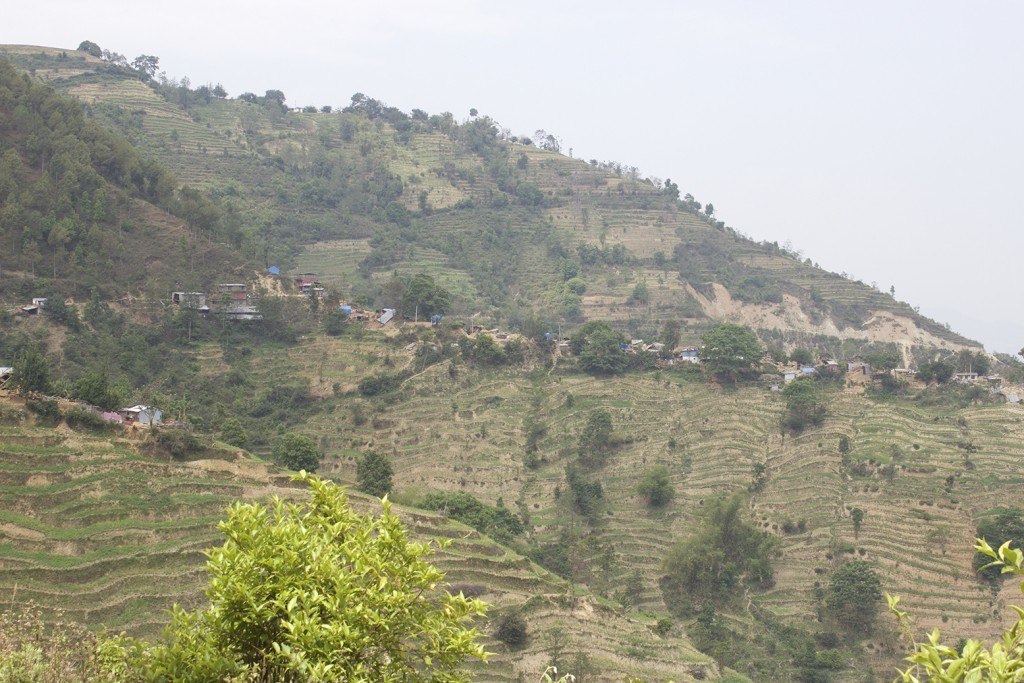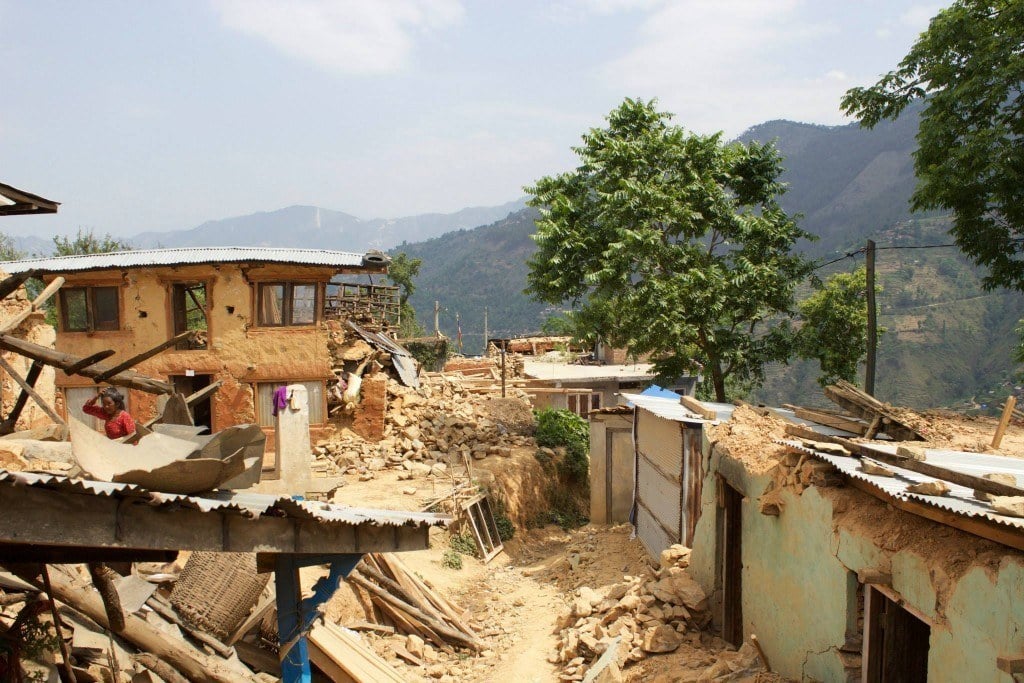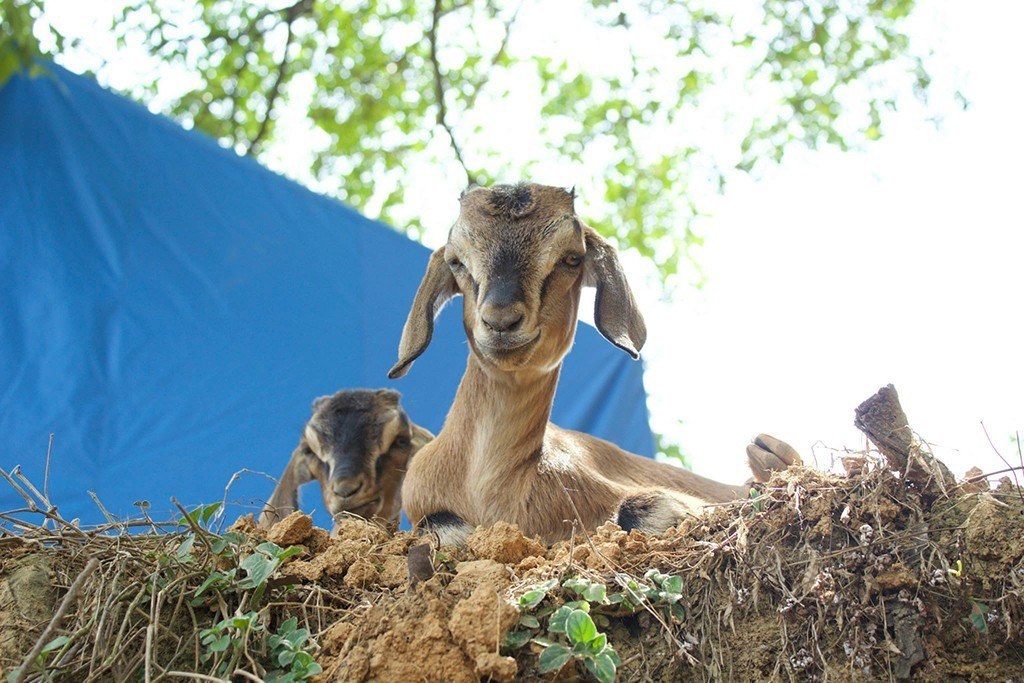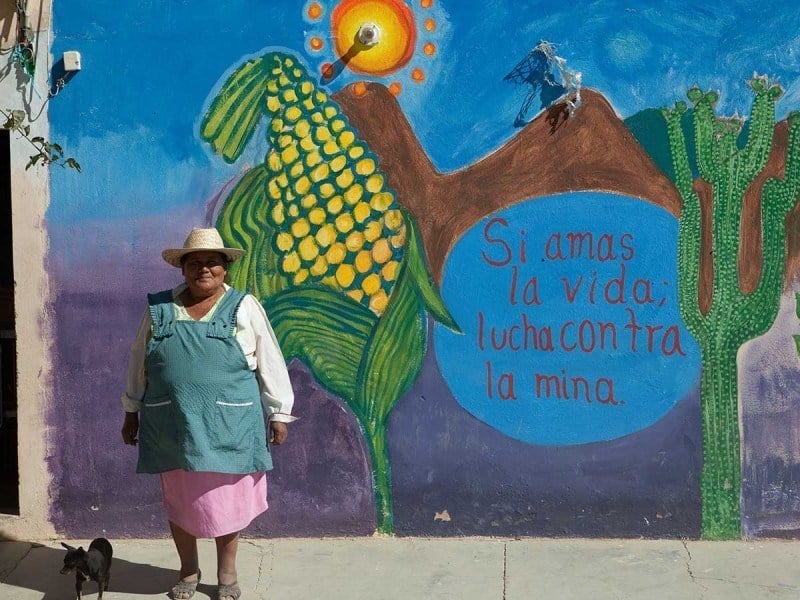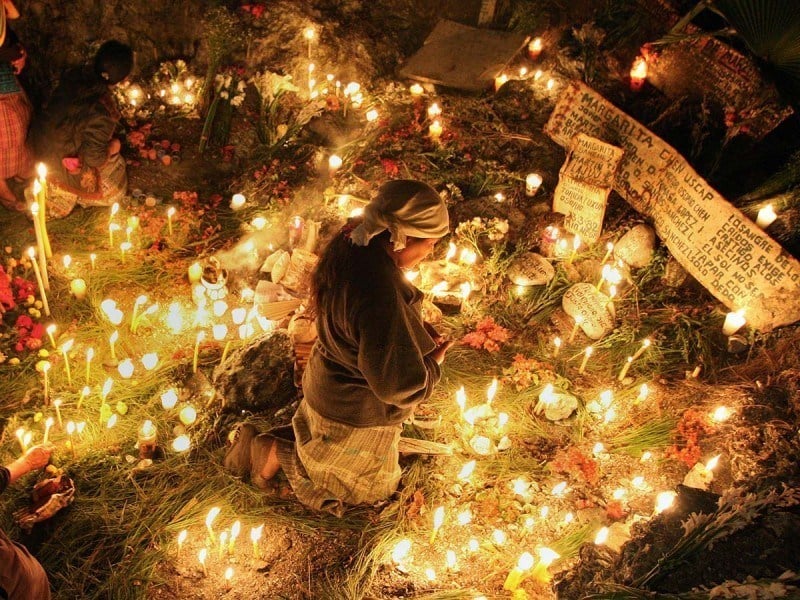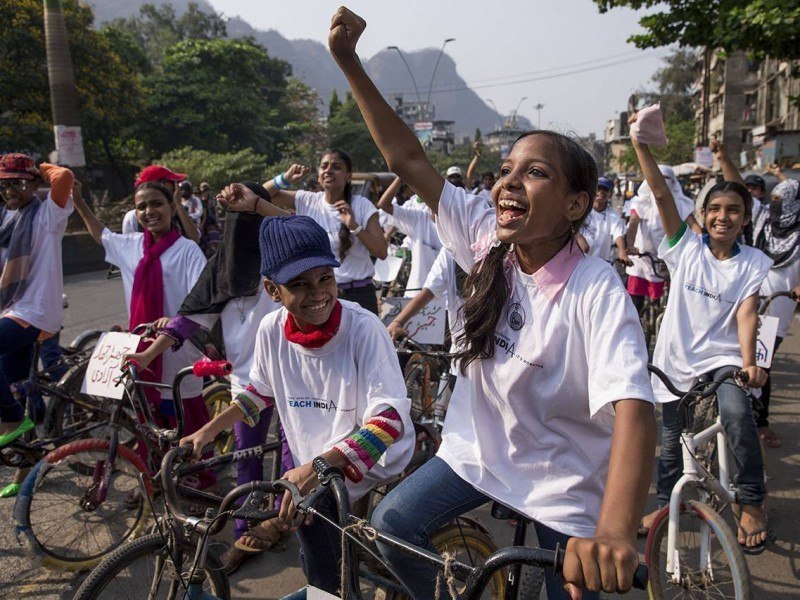AJWS’s former Director of Disaster Response & International Operations, Samantha Wolthuis, and former Associate Director of Risk Management and Administrative Services, Aaron Acharya, were in Nepal leading AJWS’s earthquake response. This is the third on-the-ground update from Samantha and Aaron. Read their first update here and their second update here.
Aaron wrote the update below after their visit with a future AJWS grantee to Mazuwa, a village just west of Kathmandu.
The view as you lumber up to the fork leading to the village of Mazuwa is spectacular. Terraces filled with freshly sprouting crops and vegetables, green trees on the slopes on all sides.
I felt happy as we parked Saurav’s four-by-four at the fork and started the ten-minute walk to the villages of Sano Mazuwa and Mazuwa. Except that there was not much today in Mazuwa to be happy about.
For two hours, we drove from Kathmandu toward Mazuwa, on the border of the Dhading district. Every third or fourth house has been turned into rubble. In some places, houses have fallen on to the road, so cars take turns to pass through. Tents given by the Chinese Red Cross line some sections of the road.
The village of Mazuwa, a collection of 54 houses with a view to die for, has been reduced to rubble. Only two houses built with concrete still stand, but with cracks.
Luckily, there was no loss of human life here. Sharmila, a lovely little girl of about five, and her many cousins survived. But school is closed, so they stay home, which is now a tarp or a tent.
For now, their hopes, dreams, comforts are all buried under the rocks, dust and wood that protected them just a few days ago after the earthquake struck. They still smile, accept candies and hugs shyly, and run into the tarps when you tease them. Some, like Sharmila’s little cousin brother, have become sober. He recounts, in halting Nepali (their language at home is Tamang), the number of cattle that are dead.
Buried along with the hopes of the community are approximately 250 goats. There is no means to excavate them. Help seems to be far away. The few that survived look at the camera as if they know what is going on. They are grateful to have survived.

The slope below the village is gradually turning green with freshly sprouting crops and vegetables. The elders say that the villagers have no energy to tend to the crops.
The landscape is beautiful. Life, in normal times, must be brutal here – people eke out a living, day by day, by farming on the terraces with very steep slopes. These days, youngsters don’t belt out songs while they fetch fodder for the cattle. Laughing children don’t run up and down the dirt road. It is a somber atmosphere – a long wait for the government, for non-governmental organizations, for community leaders, to come and help rebuild a shattered life.
We ask what message should we take to the world out there. They say they do not want much. They say there may be others who may have suffered more. ‘At least no one died here,’ they say and try a smile. All they want is some support to build a house large enough to sleep all members of their families. They will take care of the rest themselves. One of the elders said he did not know where to start: kaha bata thalnu thalnu bhayo.
Samantha and I walk all the way to the end of the rubble, where the little hill top that was the village cascades down into a steep slope filled with terraces. If you were to look up and imagine the village as it must have been before, you would see happy people from humble homes, speaking in the rather smooth mountain dialect, songs belting out from the radios, young boys checking out young girls as they walked up the dirt road to fetch water, teenagers showing off their new shoes in a game of chungis. If you were like me, you would see yourself – I grew up in terraces just like these.
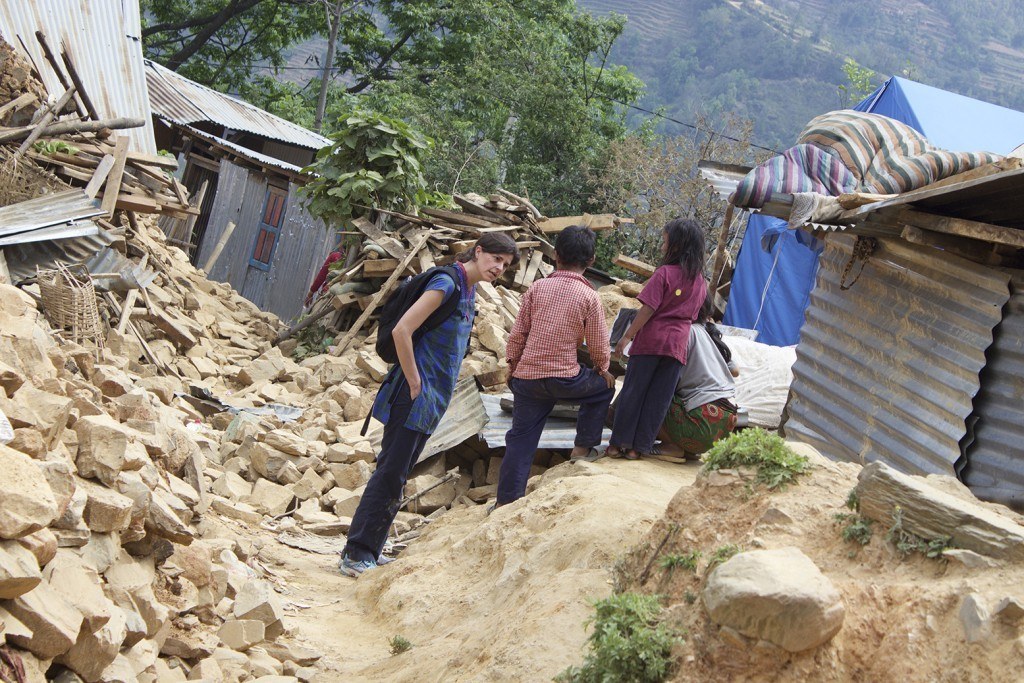
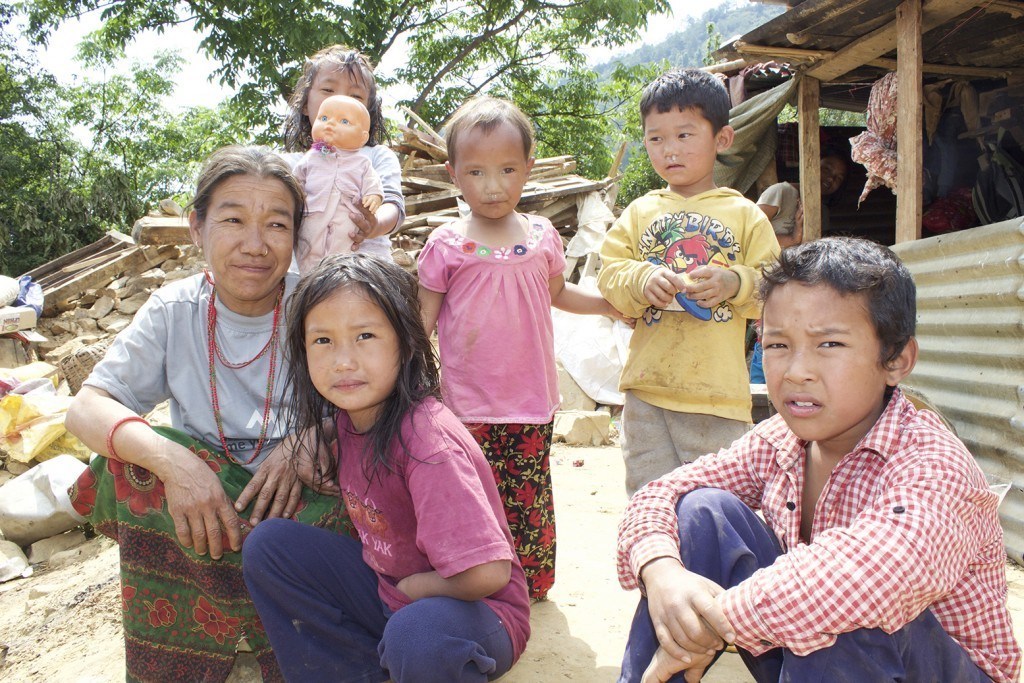

It is tempting to tell them all will be well; that help is on the way; that it will soon be over. It is tempting to give away what little you have. It is tempting to stay there with them in solidarity. Our friends from Kathmandu indicate that it is time to go. I flick away a tear, thank the strong people of Mazuwa and slowly trudge up the hill thinking of the best ways to make the most of what little assistance we can provide.
Now it is on to figuring out how we can rebuild safely. The first step we took was to agree to fund a small a project that will design earthquake proof housing for the people of Nepal. We will navigate the complicated situation of multiple entities with varying ideas of what should be done and how. But one needs to start somewhere.
AJWS’s work in countries and communities changes over time, responding to the evolving needs of partner organizations and the people they serve. To learn where AJWS is supporting activists and social justice movements today, please see Where We Work.


